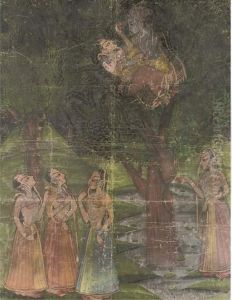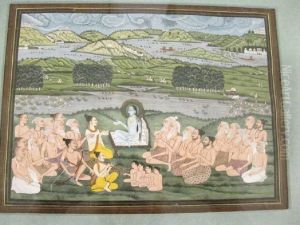Pichvai Kishangarh Paintings
The term 'Pichvai Kishangarh' refers not to an individual artist, but rather to a specific style or tradition within Indian art. Pichvai art is a traditional Indian art form with roots in Rajasthan, specifically in the town of Nathdwara near Udaipur. This style of painting is characterized by intricate and colorful depictions of Lord Krishna, showcasing various scenes from his life, especially his childhood and adolescence in Vrindavan. These paintings are typically used as backdrops in Krishna temples and during religious festivals, serving both a devotional and decorative purpose.
The Kishangarh style, on the other hand, refers to a school of painting that emerged in the Kishangarh principality of Rajasthan in the 18th century. It is famous for its unique representation of Radha and Krishna, with Radha often depicted with an elongated face, a sharp nose, and a slender figure, an idealized beauty epitomized by the famous Bani Thani paintings.
Although 'Pichvai Kishangarh' as a combined term is not standard in art historical categorization, one might interpret it as referring to artworks that combine elements of both Pichvai and Kishangarh styles, or possibly Pichvai paintings produced in the Kishangarh region. Such works would likely merge the devotional intensity and intricate detail of Pichvai art with the distinctive aesthetic and romantic themes of Kishangarh paintings.
The tradition of Pichvai painting is several centuries old, with its origins deeply tied to the Pushtimarg sect, founded by Vallabhacharya in the 16th century. Artists who create these works are often part of an unbroken lineage, passing down techniques and motifs from one generation to the next. Meanwhile, the Kishangarh school reached its zenith under the patronage of Maharaja Sawant Singh (1699–1764), who was himself an accomplished poet and artist, deeply in love with a court singer named Bani Thani, whose beauty inspired the distinctive style of Kishangarh painting.
Both Pichvai and Kishangarh artworks are celebrated for their beauty, spiritual depth, and cultural significance, embodying the rich heritage of Rajasthani art. They continue to be admired and collected, not only in India but around the world, for their vibrant depiction of India's religious and artistic traditions.

